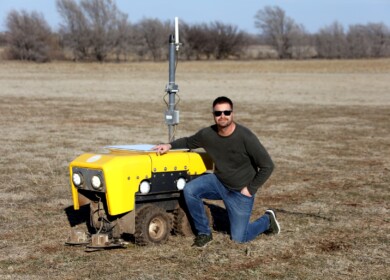The ‘No-Till Neighbors’: US pioneers of sustainable agriculture

In the late 1980s, a pivotal movement in U.S. agriculture was born, spearheaded by chemical giant DuPont, now known as Corteva. Dubbed “No-Till Neighbors,” the initiative was a series of seminars that brought together pioneering farmers to advocate for no-till farming, particularly throughout the Corn Belt. These events provided a platform for early adopters like Marion Calmer, Doug Hartford, and Terry Schneider to share practical insights on the transformative farming method.
The seminars blended formal presentations with interactive discussions and field days, creating a fertile ground for exchanging experiences and tackling the real-world challenges of no-till farming. “There was fantasy land where we all love no-till and the environment,” Marion Calmer recalled. “Then there was the reality of what issues can arise. We prepared people for what could go wrong, so they didn’t have to go through that steep learning curve.”
Challenges such as sidewall compaction and the re-opening of seed trenches were at the forefront of discussions. Calmer shared how unexpected dry conditions could impede seed germination due to these issues. However, advancements in equipment, like Yetter’s wavy blade coulter, emerged as solutions, minimizing soil disturbance and enhancing seed placement.
The success of the “No-Till Neighbors” seminars was not just in their ability to educate — they fostered a sense of community and support among farmers, with each event attracting hundreds, sometimes thousands, of participants. “Those roundtables always spawned interesting stories,” Calmer said, highlighting the trials and errors with different planter attachments that often led to unused equipment accumulating in sheds.
The collaborative spirit extended beyond farmers, involving companies like Chevron and Elanco, as well as soil conservation districts nationwide, helping spread the word and support the adoption of no-till practices.
Today, the legacy of No-Till Neighbors is unmistakable, with an estimated 110 million acres employing no-till methods—a figure that Calmer believes would be halved without these early educational efforts. “Farmer-to-farmer communication is still the best source of information,” he asserts, emphasizing the importance of persistence in adopting sustainable practices despite the challenges. “It’s worth the trial of making it work. Don’t just give up,” Calmer advises, underscoring the environmental and productivity benefits that have long-term implications for soil health and agricultural sustainability.
Source: No-Till Farmer
Enjoyed this story?
Every Monday, our subscribers get their hands on a digest of the most trending agriculture news. You can join them too!
















Discussion0 comments